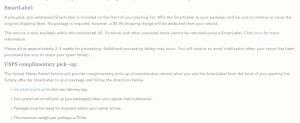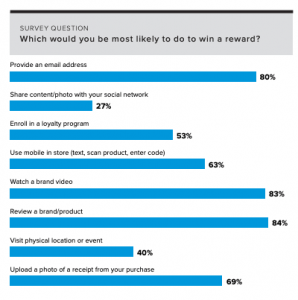When it comes to conducting business online, trust is one of the scarcest and hardest-to-earn resources. No amount of money can purchase it, and it’s incredibly difficult to replace once it has been lost. Trust can be a defining factor that drives potential customers to choose your products or services over those of your competitors, so you can’t afford to overlook it.
To make establishing trust easier, let’s examine some simple tips that you can start incorporating into your marketing strategies today. These seven techniques involve educating consumers, personalizing marketing messages, and providing a positive user experience to help you get the most out of your investment and increase sales.
Consistent Style and Design Choices
Consistency is one trait that will help your customers feel comfortable with your business. It helps improve brand recognition, which will make your content stand out and be more easily remembered. And if your company is remembered, a consumer will be much more likely to purchase from you.
That’s why drafting a style and design outline is one of the most important things you can do.
When you implement that outline, your design will be seamless across different mediums, helping you build brand authority and increase recognition. A style and design outline should include:
- Consistent colors and fonts across all marketing materials.
- Logos, including variations, which can be used on promotional items.
- Taglines, mottos, or statements.
Introduce Yourself to Your Customers
Few customers trust an online entity that does not make a deliberate attempt to introduce itself. This hesitancy evolves from the way that people tend to trust people they know over complete strangers.
Your website should have the following elements to ensure that your customers know who and what your business is all about:
- A simple introduction.
- A very visible mission statement.
- An “About Us” page.
- A contact page with the address, telephone number, and online contact details for your business.
- A privacy policy.
- An affiliate disclosure when applicable.
Make it Personal
Customers tend to trust businesses that interact with them on a personal level. This can include simple things, like engagement on social media, to more comprehensive things, like personalized customer service.
Testimonials, interaction via social networking, and addressing common questions or concerns in blog posts are just a few examples of how you can make a personal connection between your business and your customers.
Incorporating a compelling story into your “About Us” page can also help visitors better relate to you. If potential clients can empathize with challenges that you have experienced or connect with you because you have similar backgrounds, they will begin to see you as a friend instead of just another faceless company.
As current and prospective customers begin to realize that your business is a collective of like-minded, customer-oriented people, they will likely begin to trust you more. Knowing that they can contact you at any time and receive a personalized, sincere response, they will also be more likely to purchase from you.
Implement Superb Web Design
Your website should be agile, responsive, and user-friendly, and users should be able to quickly load pages, find the content they desire, and have a place where they can find answers to their problems. You may even choose to incorporate elements that allow your website to foster an online community, such as a comments feature on your blog or an FAQs section.
Even though we don’t specifically cover design elements in this post, one thing you can do to assess your current website is to share it with relatives or friends outside of your industry. If they are able to navigate the site and quickly find the information that they are looking for, then you likely have a good initial design.
Repair Broken Pages
Broken links, error messages, and slow widgets can make an otherwise professional website seem incredibly unreliable. These problems can hinder usability of your website, which in turn hurts trust.
Do your best to minimize errors. Ensure that any automated error messages include your contact information so that you can quickly identify errors and attend to any problems that your visitors may be having. Having someone routinely check links on your site can help prevent visitors from experiencing errors when they are navigating your website. If you don’t have the resources to tackle this task yourself, you can hire a company to fix broken links and test your site regularly.
Adopt a Mobile-Friendly Stance
So many people access the internet through smartphones and other mobile devices. This makes having a mobile-friendly website a must.
While some businesses do implement separate mobile websites, they often fall short at one of two crucial points: They either fail to test their mobile site, or they utilize a non-universal design that forces them to update multiple versions of their site. Updating more than one version of a website can take a significant amount of time, create inconsistencies, and increase the risk of errors being present.
Responsive web design is generally the preferred way to make a mobile version of a website due to its straightforwardness and compatibility. Responsive websites automatically render to the size of the screen so that they can easily be viewed on different devices. It simplifies content management and site maintenance by allowing you to design one website that is adaptable across devices.
Focus on Creating Helpful Content
Of all the techniques listed here, creating helpful content is likely one of the simplest and most reliable. It builds the strongest type of trust that helps your online business soar.
You should focus on creating strong pillar articles, then creating more relaxed blog-style posts. You can link those pillar articles to relevant product or service pages to encourage visitors to spend more time on your website and learn about what you have to offer. It’s also beneficial to provide free content downloads like tip sheets, PDF guides, and ebooks.
You should also include a call-to-action within your pages for added engagement and direction, but ensure that your visitors are served first to maximize trust building. You don’t want your website to come across as purely promotional because nobody likes a smarmy salesperson. If you can provide helpful, educational content on your website, visitors will come back for more and may not consider purchasing from anyone else when the time comes to make a decision.
Building trust online is similar to building trust in person. It’s important to present yourself consistently so that people understand who you are. To establish trust in your online business, your website should deliver what consumers expect – and more. If you want to be seen as trustworthy and professional, you can’t leave customers wondering why your website has broken links or why you never respond to messages. Building trust is all about fostering relationships. If you follow the seven techniques described here, consumers will know that they can rely on you.
Business & Finance Articles on Business 2 Community
(13)
Report Post






